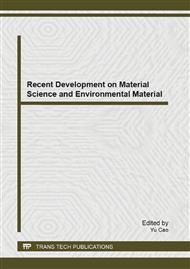p.123
p.127
p.132
p.139
p.143
p.149
p.153
p.159
p.162
The Factors Affecting the Stem Water Potential of Tamarix ramosissima Lbd. in the Extremely Arid Regions
Abstract:
Using Tamarix ramosissima Lbd. growing in the extremely arid regions along the lower reaches of Tarim River, Xinjiang, we preformed a series of investigations on the effects of weather, soil moisture and salt on the stem water potential (ψs) of T. ramosissima. We identified the leading environmental factors affecting ψs of T. ramosissima and detected the thresholds of the environmental factors. First, the soil moisture was the most important factor affecting ψs of T. ramosissima among all the environmental factors. While there was no minimum threshold of the soil moisture for T. ramosissima to absorb moisture from soil, the highest threshold of the soil moisture was 36%. When the soil moisture was higher than 36%, there was a significant change on ψs of T. ramosissima. Our study provides crucial empirical data for keeping the normal growth of T. ramosissima.
Info:
Periodical:
Pages:
143-148
Citation:
Online since:
September 2013
Authors:
Keywords:
Price:
Сopyright:
© 2013 Trans Tech Publications Ltd. All Rights Reserved
Share:
Citation:


